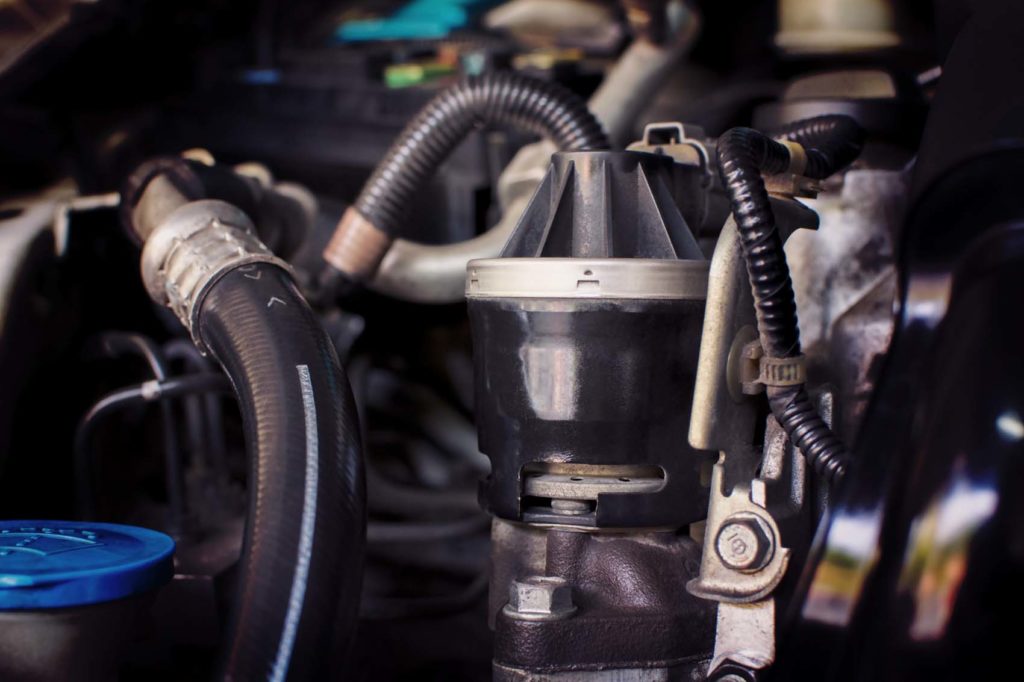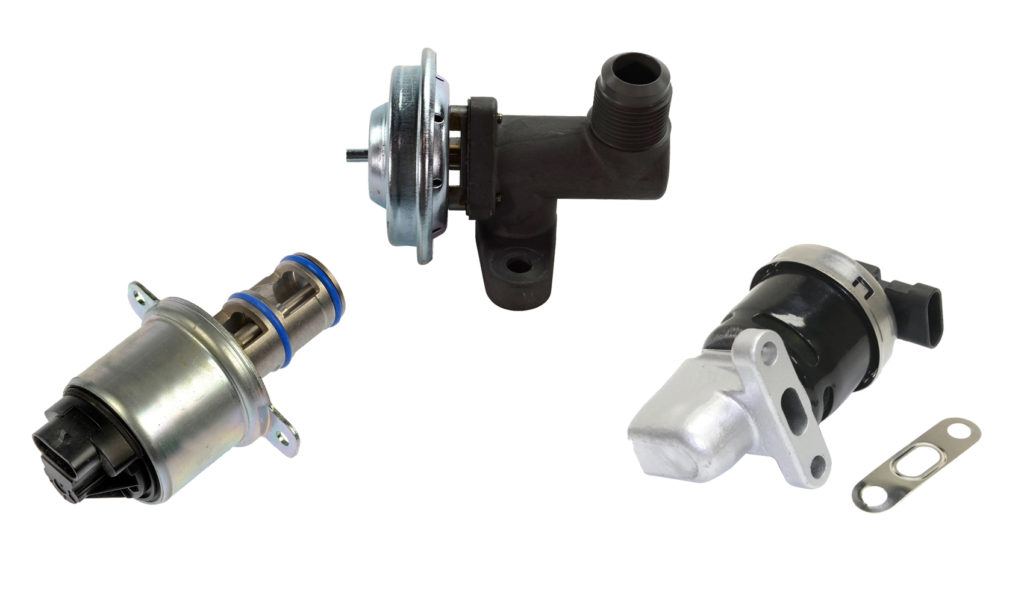Several parts of the engine work together to ensure your vehicle runs smoothly. Aside from the parts that help your daily driver perform as it should, there are also parts that aim to lessen the harmful gasses exiting your tailpipe. One such part is the exhaust gas recirculation (EGR) valve.
The EGR valve is a part of the EGR system that helps reduce nitrogen oxide (NOx) emissions by letting a small percentage of exhaust gas re-enter the engine. From there, NOx emissions are diluted, leading to a cleaner and more efficient exhaust. The EGR valve is typically controlled by the powertrain control module (PCM) on modern vehicles.
What Does the EGR System Do?
Exhaust gas recirculation system lowers NOx levels and controls detonation.
Detonation is a spark knock or ping that can cause uncontrolled combustion due to high pressure and extreme heat.
The EGR system can also help produce better ignition timing to increase power and efficiency.
How Does an EGR Valve Work?
A typical EGR valve opens at speeds above idle on a warm engine using a DC stepper motor and worm gear. When the valve opens, a small amount of exhaust gas (usually between 5% and 10%) enters the intake manifold, which lowers the combustion temperatures and NOx emissions.

The EGR valve controls the flow of exhaust gases in different ways.
For example, in V-type engines, the EGR system sources exhaust gas primarily from the intake manifold crossover.
The exhaust crossover connects to the EGR valve through a cast passage that lets the valve route exhaust gas to the manifold openings.
Meanwhile, for inline-type engines, the EGR valve relies on an external tube to carry exhaust gas.
This tube is long enough to cool the gas before it enters the EGR valve.
While almost all vehicles are equipped with an EGR system, many vehicles are capable of reducing harmful emissions even without an EGR valve. These vehicles rely on the efficiency of computer-controlled fuel injection.
Engines without an EGR system have variable valve timing (VVT) that closes the exhaust valve sooner than normal. This process also traps some exhaust gas in the cylinder the same way the EGR valve does.
What Causes an EGR Valve to Fail?
A clogged EGR valve is a common problem in vehicles with an EGR system. An excessive buildup of carbon deposits can cause the valve to get stuck and block the passages, preventing exhaust gas from getting recirculated. In some cases, a clogged EGR valve doesn’t require a replacement.
To know whether or not your EGR valve can still be used, have a certified mechanic test it out. But if you’re a seasoned DIYer, you can test your EGR valve on your own, provided that you have the right tools and manual.

Can You Drive a Car With a Bad EGR Valve?
In most cases, your car will continue to run with a bad EGR valve. However, performance issues like rough idling and poor acceleration will probably make your ride an unpleasant one. Other than that, your vehicle will also produce too much NOx, which can cause it to fail the emissions test.
What Happens When You Get an EGR Delete?
An EGR delete gets rid of the EGR system. Some aftermarket performance kit lets you remove the EGR valve to prevent exhaust gas from being routed back into the engine.
The benefits of deleting the EGR system include a boost in horsepower, better fuel economy, longer engine life, and reduced engine temperature, among others.
But if the engine is built to work with an EGR system, getting rid of it might result in engine knocks, performance problems, and other issues.
So if you’re thinking about getting an EGR delete, it’s best to consult a professional before proceeding.
How Much Does It Cost to Replace the EGR Valve
A replacement EGR valve can cost anywhere between $200 and $300, depending on factors like the part’s brand and your vehicle’s specifications. Labor costs to install the new EGR valve can range from $100 to $500. The exact cost of the repair will depend on a variety of factors, such as the type of vehicle you have and the shop you choose.
Shopping for a Replacement EGR Valve

When shopping for a replacement EGR valve, always keep your vehicle’s specifications in mind. Knowing your vehicle’s year, make, and model is crucial in finding a direct-fit replacement for your old EGR valve.
You should also consider whether you’re going to buy an original equipment (OE) or aftermarket EGR valve. Both variants are manufactured using the same heavy-duty materials. They also passed the same quality control standards.
The only difference is that OE EGR valves are pricier than the aftermarket ones because they carry the automaker’s brand name. So if you’re looking for a cost-effective way to repair your vehicle, you might want to go the aftermarket route.
Where to Find a Top-Notch EGR Valve Replacement
CarParts.com offers a wide selection of OE-grade EGR valve replacements for various makes and models一including yours! All our products follow OE specifications and pass strict quality checks, so you’re sure to find an EGR valve that’s built to last. All you have to do is use our vehicle selector, and you’ll find what you need in a matter of minutes.
We ship from strategically located warehouses across the US. Order today, and we’ll deliver the parts you need straight to your doorstep in as fast as two business days. All our EGR valves also come with a low-price guarantee to help you get your daily driver back into shape without breaking the bank for your repairs.
Any information provided on this Website is for informational purposes only and is not intended to replace consultation with a professional mechanic. The accuracy and timeliness of the information may change from the time of publication.






























